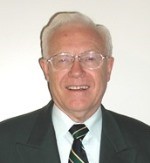an Interview and a Life Story
PERSONAL STORY
By Dr. Kenneth Smith, PMP
Honolulu, Hawaii
& Manila, The Philippines
I recently had the rare privilege of being one of the very few Foreign Service Officers from the U.S. Agency for International Development (USAID) to be included in the U.S. State Department’s “HALL OF FAME.” Well, Not Exactly! But seriously, during an extended interview in December 2020, details of my service were solicited and are now included in the “Diplomatic Oral History of the United States” (DOH) — part of the Library of Congress’ ‘American Memory Archives.’ [As a first generation American and my family’s ‘Founding Father,’ having my contribution to my adopted country officially preserved for posterity is particularly poignant.]
My around-the-world odyssey with USAID in Development Administration to further and foster U.S. Foreign Aid Policies focused on applying Program & Project Management ‘Best Practices’ and innovations to infrastructure, economic, and social development projects — as well as intermittent disaster relief activities — in many countries; despite often-deficient organizational environments. Subsequent consulting – also in project management — was with the World Bank Group, African and Asian Development Banks, and the UN, as well as with USAID.
Like others of its ilk, the interview covered my background, education, and several activities of national & international historic significance in which I was directly involved.
However, even if you skip my early upbringing, and subsequent education chronology; my ‘undiplomatic’ interview should interest PM World Journal (PMWJ) readers, as well as members of the Project Management Institute (PMI) and the International Project Management Association-USA (IPMA-USA). My experience from the 1960’s and subsequent application of project management tools and techniques is replete with anecdotes (humorous in retrospect) – such as the Vietnamese Rat Tail Project (p 42); the Indonesian Well & Toilet Project (p 103); the Papua New Guinea Highway Project (p 131) and Ethiopian University Project (p 145) – which illustrate several key issues and ‘Lessons Learned’ therefrom. [NOTE: The Logical Framework, Critical Path, Line-of-Balance, and other tools mentioned during the interview are detailed in my legacy book Project Management PRAXIS (available from Amazon). For details, check my website: https://kensmiths.com/ ]
In conducting their interviews, questioners penetrate official veneer to obtain unclassified personal perspectives and singular insights on the situations, as well as unvarnished opinions about the circumstances and personalities involved; or to paraphrase 20th Century news-radio broadcaster Paul Harvey — “Now you can Read the Rest of the Story!” [NOTE: Views expressed by interviewees do not necessarily reflect those of the U.S. Government.] Consequently, the DOH collection contains material not found in other official documents, so is an invaluable source of unique information for historians, academicians and other researchers of U.S. government, history and international affairs.
More…
To read entire article, click here
How to cite this article: Smith, K. (2021). USAID, PM Best Practices, an Interview and a Life Story; Commentary, PM World Journal, Vol. X, Issue VIII, August. Available online at https://pmworldlibrary.net/wp-content/uploads/2021/08/pmwj108-Aug2021-Smith-usaid-pm-best-practices-interview-life-story.pdf
About the Author

Dr. Kenneth Smith
Honolulu, Hawaii
& Manila, The Philippines
![]()
Initially a US Civil Service Management Intern, then a management analyst & systems specialist with the US Defense Department, Ken subsequently had a career as a senior foreign service officer — management & evaluation specialist, project manager, and in-house facilitator/trainer — with the US Agency for International Development (USAID). Ken assisted host country governments in many countries to plan, monitor and evaluate projects in various technical sectors; working ‘hands-on’ with their officers as well as other USAID personnel, contractors and NGOs. Intermittently, he was also a team leader &/or team member to conduct project, program & and country-level portfolio analyses and evaluations.
Concurrently, Ken had an active dual career as Air Force ready-reservist in Asia (Japan, Korea, Vietnam, Thailand, Indonesia, Philippines) as well as the Washington D.C. area; was Chairman of a Congressional Services Academy Advisory Board (SAAB); and had additional duties as an Air Force Academy Liaison Officer. He retired as a ‘bird’ colonel.
After retirement from USAID, Ken was a project management consultant for ADB, the World Bank, UNDP and USAID.
He earned his DPA (Doctor of Public Administration) from the George Mason University (GMU) in Virginia, his MS from Massachusetts Institute of Technology (MIT Systems Analysis Fellow, Center for Advanced Engineering Study), and BA & MA degrees in Government & International Relations from the University of Connecticut (UCONN). A long-time member of the Project Management Institute (PMI) and IPMA-USA, Ken is a Certified Project Management Professional (PMP®) and a member of the PMI®-Honolulu and Philippines Chapters.
Ken’s book — Project Management PRAXIS (available from Amazon) — includes many innovative project management tools & techniques; and describes a “Toolkit” of related templates available directly from him at kenfsmith@aol.com on proof of purchase of PRAXIS.
To view other works by Ken Smith, visit his author showcase in the PM World Library at https://pmworldlibrary.net/authors/dr-kenneth-smith/









